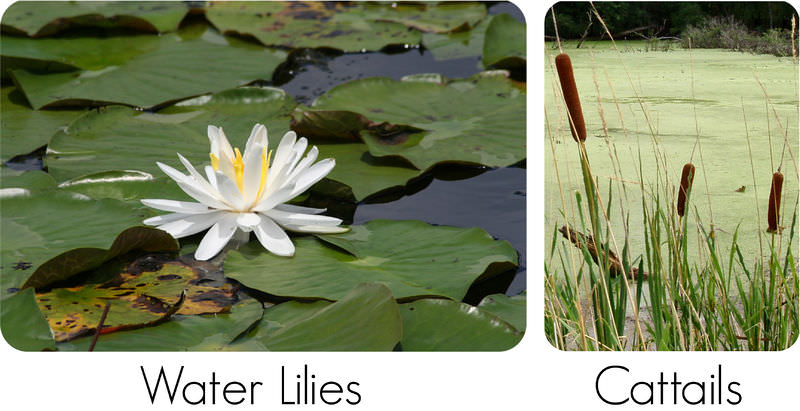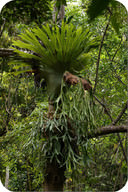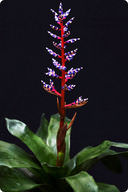9.22 植物适应
章节大纲
-
Look closely at the petals of this flower. Do they look different?
::仔细看看这朵花的花瓣 它们看起来不一样吗?This flower is from an aloe plant. Aloes are succulent plants, which have adaptations that allow them to store in their enlarged fleshy leaves, , or . This allows them to survive in arid environments.
::这朵花来自Aloes植物。Aloes是苏食植物,它们具有适应性,可以储存在扩大的肉叶中,或者说。这允许它们在干旱环境中生存。Plant Adaptations
::植物适应Plants live just about everywhere on Earth. To live in so many different habitats , they have evolved adaptations that allow them to survive and reproduce under a diversity of conditions.
::植物几乎生活在地球上的每一个地方。为了生活在如此多不同的生境中,它们已经进化了适应性,允许它们在多种条件下生存和繁殖。All plants are adapted to live on land. Or are they? All living plants today have ancestors , but some plants now live in the water. They have had to evolve new adaptations for their watery habitat.
::所有的植物都适应了在陆地上生活,或者说它们是否?今天所有活的植物都有祖先,但有些植物现在却生活在水中。它们必须为其水栖息地制定新的适应方法。Adaptations to Water
::对水的适应plants are plants that live in water. Living in water has certain advantages for plants. One advantage is, well, the water. There’s plenty of it and it’s all around. Therefore, most aquatic plants do not need adaptations for absorbing, transporting, and conserving water. They can save energy and matter by not growing extensive root systems, , or thick cuticles on leaves. Support is also less of a problem because of the buoyancy of water. As a result, adaptations such as strong woody stems and deep anchoring roots are not necessary for most aquatic plants.
::生活在水中的植物是生活在水中的植物。 生活在水中的植物对植物有一定的优势。 其中一个优势是水。 水的优势是水。 水中有很多,而且水遍布四周。 因此,大多数水生植物不需要适应来吸收、运输和保护水。 它们可以通过不扩大根系系统、或树叶上厚厚的切片来节省能源和物质。 支持问题也因水的浮力而减少。 因此,大多数水生植物并不需要强大的木茎和深根的适应。Living in water does present challenges to plants, however. For one thing, pollination by wind or isn’t feasible under water, so aquatic plants may have adaptations that help them keep their flowers above water. For instance, water lilies have bowl-shaped flowers and broad, flat leaves that float. This allows the lilies to collect the maximum amount of sunlight, which does not penetrate very deeply below the water's surface. Plants that live in moving water, such as streams and rivers, may have different adaptations. For example, cattails have narrow, strap-like leaves that reduce their resistance to the moving water (see Figure ).
::然而,生活在水中的植物确实对植物提出了挑战。 一方面,风授授粉或者水下不可行,水生植物可能会有有助于它们将花朵保存在水面之上的适应措施。 比如,水百合花有碗状的花朵和漂浮的宽阔的叶子。 这使得百合可以收集最大量的阳光,而阳光不会深入地穿透水面之下。 生活在流动水中的植物,如溪水和河流,可能有不同的适应措施。 比如,尾巴有狭窄的、带状的叶子,可以减少其对移动水的抵抗力(见图 ) 。Water lilies and cattails have different adaptations for life in the water. Compare the leaves of the two kinds of plants. How do the leaves help the plants adapt to their watery habitats? Adaptations to Extreme Dryness
::适应极端干燥Plants that live in extremely dry environments have the opposite problem: how to get and keep water. Plants that are adapted to very dry environments are called . Their adaptations may help them increase water intake, decrease water loss, or store water when it is available.
::生活在极度干旱环境中的植物有相反的问题:如何获取和保持水;适应非常干旱环境的植物被称为:适应性能的植物可以帮助他们增加水的摄取量,减少水的流失,或者在有水时储存水。The saguaro cactus pictured in Figure has adapted in all three ways. When it was still a very small plant, just a few inches high, its shallow roots already reached out as much as 2 meters (7 feet) from the base of the stem. By now, its root system is much more widespread. It allows the cactus to gather as much moisture as possible from rare rainfalls. The saguaro doesn’t have any leaves to lose water by transpiration . It also has a large, barrel-shaped stem that can store a lot of water. Thorns protect the stem from thirsty animals that might try to get at the water inside.
::图中描绘的鹦鹉仙人掌在所有三个方面都进行了调整。当它还是个很小的植物时,只有几英寸高,其浅根已经从干茎底部伸展到2米(7英尺)的距离。现在,其根系更为广泛。它允许仙人掌从稀有的降雨中收集尽可能多的水分。它没有任何叶子可以因蒸发而失去水。它还有一个巨大的桶状干柱,可以储存大量水。 Thorns保护来自可能试图从水中取水的渴动物的干茎。The saguaro cactus has many adaptations for extreme dryness. How does it store water? Adaptations to Air
::空气适应Plants called grow on other plants. They obtain moisture from the air and make food by . Most epiphytes are or orchids that live in or rainforests (see Figure ). Host trees provide support, allowing epiphyte plants to obtain air and sunlight high above the forest floor. Being elevated above the ground lets epiphytes get out of the shadows on the forest floor so they can get enough sunlight for photosynthesis. Being elevated may also reduce the risk of being eaten by herbivores and increase the chance of pollination by wind.
::植物靠其他植物生长,它们从空气中获取水分,并生产食物。大多数附生植物是生活在雨林或雨林中的兰花(见图 ) 。 宿主树木提供支持,使附生植物能够获得高在森林地面上的空气和阳光。 爬到地面上,使附生植物能够从森林地面的阴影中脱身,从而获得足够的阳光来进行光合作用。 升生还可能降低被草药吃掉的风险,增加风授粉的机会。These Elkhorn and Staghorn ferns are growing on a rainforest tree as epiphytes. Epiphytes don’t grow in soil , so they may not have roots. However, they still need water for photosynthesis. Rainforests are humid, so the plants may be able to absorb the water they need from the air. However, many epiphytes have evolved modified leaves or other structures for collecting rainwater, fog, or dew. The leaves of the bromeliad shown in Figure are rolled into funnel shapes to collect rainwater. The base of the leaves forms a tank that can hold more than 8 liters (2 gallons) of water. Some and may spend their whole in the pool of water in the tank, adding minerals to the water with their wastes. The tissues at the base of the leaf are absorbent, so they can take in both water and minerals from the tank.
::食虫动物不会在土壤中生长,因此它们可能没有根。然而,它们仍然需要水来进行光合作用。雨林是潮湿的,因此植物可以吸收它们需要的空气中的水。然而,许多食虫动物已经进化了经改良的叶子或其他收集雨水、雾或露水的结构。图中显示的溴化物的叶子被卷成漏斗形状来收集雨水。叶子的底部形成一个储水罐,储水量可超过8升(2加仑)的水。有些植物可能将其全部花在水池中,并将矿物质与废物一起加到水中。叶子底部的组织是吸收的,因此它们可以从水中取水和矿物质。The leaves of this bromeliad are specialized to collect, store, and absorb rainwater. Summary
::摘要-
Plants live just about everywhere on Earth, so they have evolved adaptations that allow them to survive and reproduce under a diversity of conditions.
::植物几乎生活在地球上的每一个地方, 因此,它们进化了适应, 允许它们生存和繁殖 在各种各样的条件下。 -
Various plants have evolved adaptations to live in the water, in very dry environments, or in the air as epiphytes.
::各种植物在水中、在非常干旱的环境中或作为附着物在空气中生长,并逐渐形成适应性。
Review
::回顾-
List special challenges that aquatic plants face.
::列出水生植物面临的特殊挑战。 -
What are xerophytes? Give an example.
::氧气是什么?举个例子。 -
Identify three general ways that plants can adapt to extreme dryness.
::找出植物能够适应极端干燥的三种一般方法。 -
Describe how epiphytes can absorb moisture without growing roots in soil.
::描述附生植物如何吸收水分而不在土壤中生根。 -
Why are epiphytes found mainly in rainforest ecosystems?
::为什么主要在雨林生态系统中发现附着物? -
Apply the concept of symbiosis to epiphytes and their host plants. Do you think they have a symbiotic relationship? If so, which type of symbiotic relationship do you think they have? Explain your answer.
::将共生概念应用到附着植物及其宿主植物上。 你认为它们有共生关系吗? 如果有, 你认为它们有哪种共生关系? 请解释一下答案。
-
Plants live just about everywhere on Earth, so they have evolved adaptations that allow them to survive and reproduce under a diversity of conditions.




